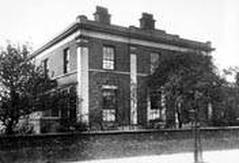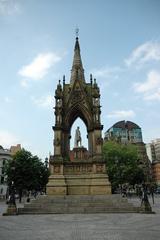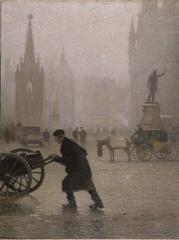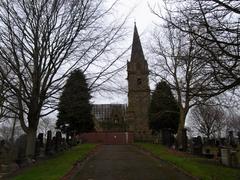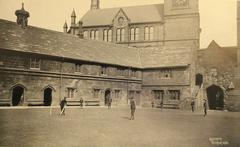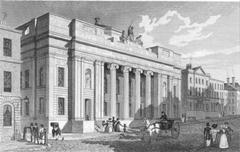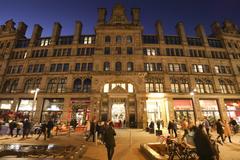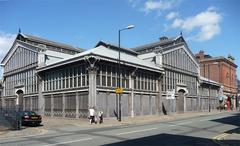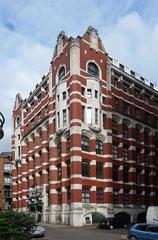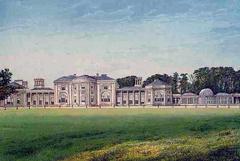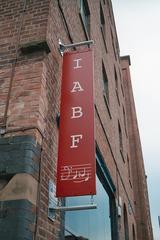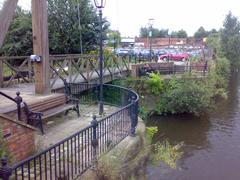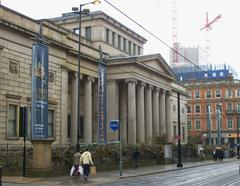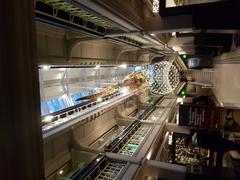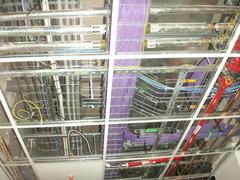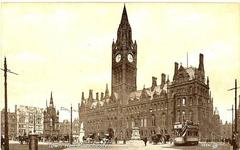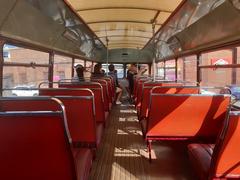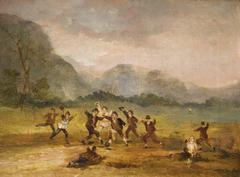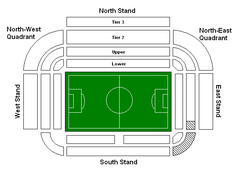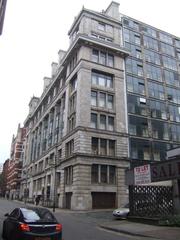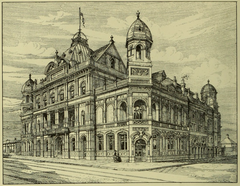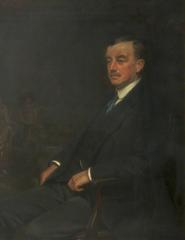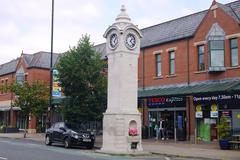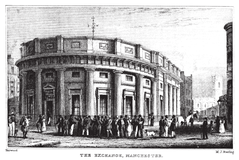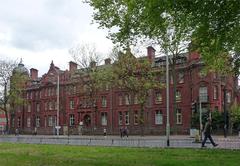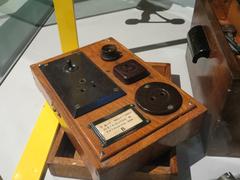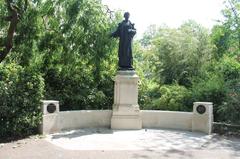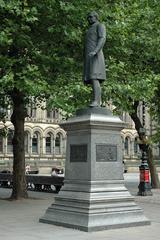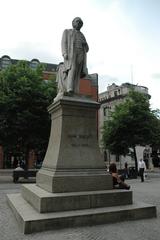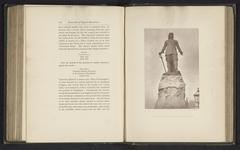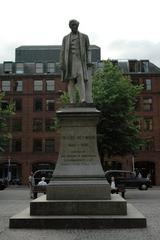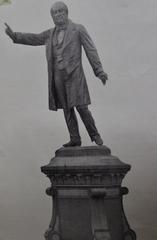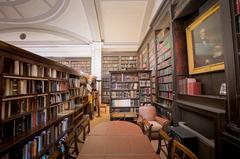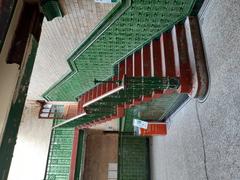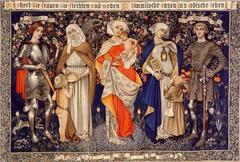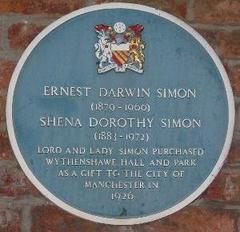
Barnes Wallis Building Manchester: Visiting Hours, Tickets, and Comprehensive Visitor Guide
Date: 04/07/2025
Introduction
The Barnes Wallis Building, located on the University of Manchester’s North Campus, stands as an emblem of post-war architectural innovation and the city’s enduring commitment to engineering and academic excellence. Named after Sir Barnes Wallis—the legendary engineer behind the World War II “bouncing bomb”—the building is a testament to Manchester’s rich heritage of scientific achievement and modernist design. Erected during the 1960s as part of the University of Manchester Institute of Science and Technology (UMIST) expansion, it reflects a pivotal era in British higher education and architecture.
Today, the Barnes Wallis Building functions as both an academic hub and a vibrant social venue. Visitors can expect to encounter striking Brutalist architecture, a lively events calendar, and a palpable sense of Manchester’s academic and cultural dynamism. This guide provides detailed information on the building’s history, architectural features, visiting hours, ticketing, accessibility, and practical tips for making the most of your visit.
For official updates and event schedules, consult the University of Manchester official website, the University of Manchester Student Union, and Modern Mooch’s UMIST Campus Exploration.
Table of Contents
- History and Cultural Context
- Architectural Design and Key Features
- The Building’s Role in Campus and City Life
- Visiting Information: Hours, Tickets, and Access
- Tips for Visitors and Architecture Enthusiasts
- Frequently Asked Questions (FAQ)
- Redevelopment, Preservation, and Community Advocacy
- Nearby Attractions
- Summary and Final Tips
- References
History and Cultural Context
Constructed in the 1960s, the Barnes Wallis Building was part of a nationwide push to modernize higher education facilities. Its namesake, Sir Barnes Wallis, is celebrated for his pivotal contributions to engineering and aviation, notably the invention of the “bouncing bomb” used during the Dambusters Raid (Modern Mooch). The building’s creation coincided with UMIST’s rapid post-war expansion, aiming to provide state-of-the-art resources for teaching, research, and student life.
The building has served multiple roles: from student union headquarters and conference center to a renowned music venue. Its location alongside other modernist landmarks—the Renold and Faraday Buildings—cements its place within Manchester’s landscape of innovation and learning (University of Manchester Science and Engineering Heritage).
Architectural Design and Key Features
Modernist Vision
Designed by Cruickshank and Seward, the Barnes Wallis Building typifies the modernist architectural ethos of the 1960s. Its robust concrete frame, minimal ornamentation, and interplay of geometric forms reflect the era’s optimism and focus on functionality (Modern Mooch).
Structural and Artistic Highlights
- Brutalist Elements: Strong, exposed concrete frames; angular profiles; and functional, honest materials.
- Landscape Integration: Mature trees and green spaces soften the structure’s angularity, complemented by artistic features like the Anthony Holloway Screen Wall.
- Interiors: Open-plan spaces, flexible layouts, natural light through large windows, and connections to campus artworks such as Victor Pasmore’s mural in the adjacent Renold Building.
- Adaptive Spaces: The building has hosted everything from student bars and music performances to academic conferences and computer clusters.
The Building’s Role in Campus and City Life
Since its inception, the Barnes Wallis Building has been central to campus culture, social gatherings, and public events. It houses the Staff House Conference Centre and is a popular venue for concerts, theatre, festivals, and society meetings (Skiddle Venue Details). Its proximity to Manchester Piccadilly station and integration within the city’s nightlife ecosystem further solidify its role as a community hub.
The building actively supports Manchester’s values of diversity and inclusion, hosting events for a wide range of student groups and fostering collaborations with local artists and cultural organizations (Visit Manchester LGBT+ Guide). Sustainability initiatives and walkable connections align with the city’s environmental goals (Visit Manchester Sustainable Travel).
Visiting Information: Hours, Tickets, and Access
Visiting Hours
- General Access: Monday to Friday, 8:30 AM – 6:00 PM. Weekend access is limited and usually tied to special events.
- Event Access: Hours may vary; check event listings or the University of Manchester events calendar.
Tickets and Entry
- General Admission: Free to university members and most visitors during open hours.
- Events: Some events (concerts, festivals, conferences) may require tickets. Purchase online or at the venue; see Skiddle listings.
Getting There and Parking
- Location: Sackville Street, North Campus, Manchester.
- Transport: 10-minute walk from Manchester Piccadilly station; served by local buses and trams.
- Parking: Limited on-campus spaces; public parking available nearby. Public transport is recommended due to city center traffic.
Accessibility
- Physical Access: Step-free entry, elevators, accessible restrooms, and clear signage.
- Assistance: Contact the building or university in advance for specific needs (Skiddle Venue Accessibility).
Tips for Visitors and Architecture Enthusiasts
- Photography: Best in early morning or late afternoon for dramatic light on concrete textures.
- Guided Tours: Offered occasionally during open days or special events; inquire with the university’s heritage office.
- Campus Walks: Combine your visit with nearby landmarks like the Renold and Faraday Buildings.
- Events: Explore public events for a richer cultural experience—music gigs, theatre, and more.
Frequently Asked Questions (FAQ)
Q: What are the Barnes Wallis Building visiting hours?
A: General public access is Monday to Friday, 8:30 AM–6:00 PM. Check event schedules for extended hours.
Q: Do I need a ticket to enter?
A: General entry is free. Tickets are required for some special events.
Q: Is the building wheelchair accessible?
A: Yes, with step-free access, elevators, and accessible restrooms.
Q: Are guided tours available?
A: Occasionally, during special events or open days. Contact the university for details.
Q: Can I take photographs?
A: Permitted in public/common areas unless restricted during private events.
Redevelopment, Preservation, and Community Advocacy
The Barnes Wallis Building is currently at the center of redevelopment discussions, with proposals for demolition as part of the North Campus regeneration. Heritage groups such as The Modernist Society and the Twentieth Century Society advocate for adaptive reuse, highlighting the building’s architectural and cultural value (The Modernist Society). Digital preservation initiatives, including 3D scanning and academic documentation, aim to safeguard its legacy for future generations.
For the latest on redevelopment and preservation efforts, follow updates from the university and local heritage organizations.
Nearby Attractions
Combine your visit with explorations of:
- The Renold Building and Faraday Tower (modernist architecture)
- Manchester Museum and John Rylands Library (cultural highlights)
- The vibrant Northern Quarter (bars, music venues, creative spaces)
Guided heritage walks often feature the Barnes Wallis Building, offering broader context on Manchester’s architectural evolution.
Summary and Final Tips
The Barnes Wallis Building remains a cornerstone of Manchester’s architectural and cultural identity. Its modernist design, adaptable spaces, and ongoing social relevance make it a compelling destination for both casual visitors and architecture aficionados. With ongoing preservation advocacy and redevelopment plans, the building symbolizes the city’s dynamic balance between progress and heritage.
Final Tips:
- Check official channels for current visiting hours, accessibility details, and event schedules.
- Explore nearby landmarks for a full experience of Manchester’s architectural landscape.
- Download the Audiala app for guided tours and event notifications.
- Support preservation by engaging with community campaigns and heritage organizations.
References
- Modern Mooch’s UMIST Campus Exploration
- University of Manchester Science and Engineering Heritage
- Barnes Wallis Building Venue Details, Skiddle
- University of Manchester Official Website
- The Modernist Society
Plan your visit to the Barnes Wallis Building for an insightful journey into Manchester’s past, present, and future. Download the Audiala app and follow us on social media for more guides and updates on Manchester’s historical gems.

